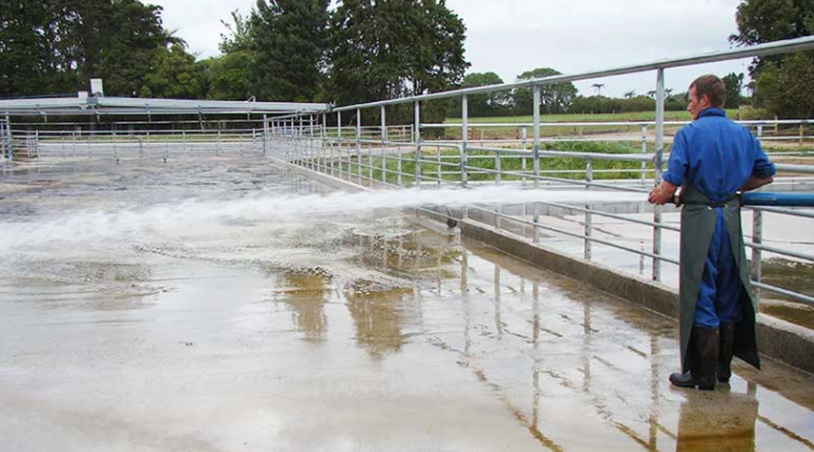Reducing water use and wastewater
What
Wastewater generated from farming activities, particularly dairy farming, requires careful management. Water may also be wasted from leaks in troughs. Reducing or reusing wastewater from the farming operation and fixing trough and water line leaks can aid to decrease the amount of contaminants being leached into waterways.
Reducing the amount of wastewater generated is especially important in areas where the suitability of soils for effluent irrigation is limited. Regions with high soil moistures and shallow groundwater tables are especially vulnerable to leaching of contaminants through the soil as the soil and groundwater is highly connected.

Image source: Dairy NZ.
Why
A lot of water is used in the milking shed. Efficient processes for milk cooling, vat wash, and yard hosing can add up to significant savings in water.
Leaks at troughs or in water lines generate wastage and can result in contaminants entering waterways. Water lines that are near the surface, run under races or over drains are at particular risk of damage.
There are multiple ways in which you can reduce water waste on your farm
Efficient processes for milk cooling – use correct flow rates.
Efficient vat wash – can use excess water from milk cooling.
Efficient yard hosing – excess water from milk cooling can be stored and used for yard washing instead of the water going to waste.
Wet the shed floor before milking – manure won’t stick so less water will be required for wash down.
Use a scraper or a chain on the backing gate to break up dung before hosing.
Wash the yard after each milking.
Work actively and close to the effluent.
Hose the yard with high water volume under low pressure.
Include a timer setting on the yard wash down pump (set a time standard for wash down and train staff to achieve it).
Check troughs regularly for leaks.
Check water lines regularly for leaks and make sure water lines are not too close to the surface where they would susceptible to being damaged causing leaks. It’s easy to lose a lot of water - about 14 cubic metres a day will be lost through a hole the size of a small nail in a water line.
Things to consider
Areas where water can be conserved e.g., shed wash down
The impact of a single drip over a period of time
Cost of additional water storage
Setting up regular routine checks of troughs and waterlines
References